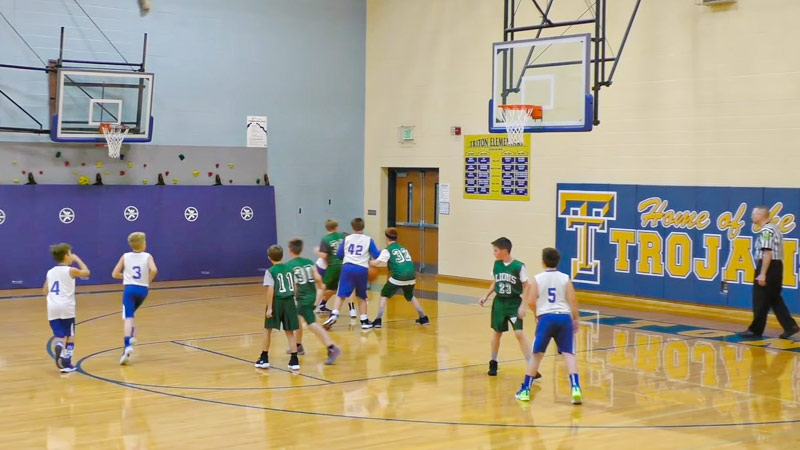Basketball is a beloved sport played by millions of children around the world. As young players dive into the exciting world of basketball, it’s crucial for them to understand the basic rules of the game.
By familiarizing themselves with these rules, kids can enjoy fair play, develop their skills, and become more confident on the court.
In this blog post, we will delve into the fundamental rules of basketball for kids, covering the most common questions and providing clear explanations. Let’s get started.
Basketball Basic Rules For Kids
Basketball is an exciting and popular sport enjoyed by people of all ages, including kids. To ensure fair play and a safe environment, basketball has specific rules that govern different aspects of the game. Let’s delve into the rules for kids in detail, covering dribbling, passing, shooting, traveling, and double dribble.
Dribbling
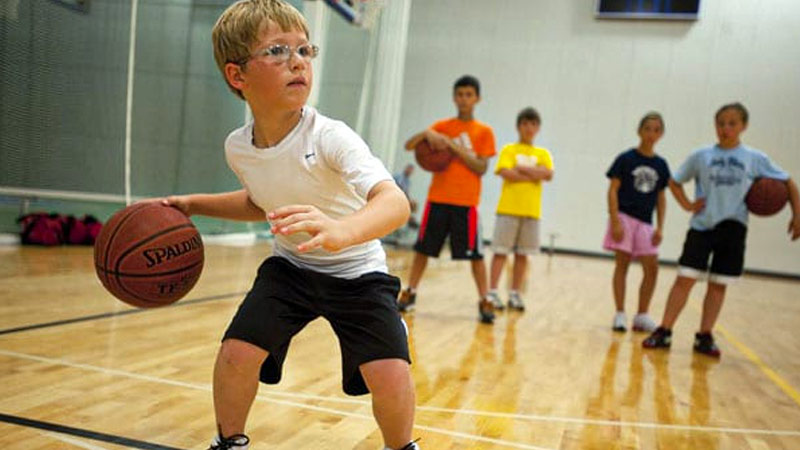
Source: basketballhq.com
Dribbling is a fundamental skill in basketball that allows players to move the ball while maintaining their dribble.
One of the most important rules is to prevent traveling. Kids should understand that they cannot run or walk while holding the ball without dribbling. The primary foot responsible for establishing the pivot is determined when a player receives the ball.
Lifting or sliding this pivot foot without dribbling is considered traveling, resulting in a turnover and the opposing team gaining possession.
Players must avoid carrying or palming the ball during dribbling. Carrying occurs when a player allows the ball to rest in their hand for too long or pushes it excessively, giving them an unfair advantage.
Palming refers to the act of placing the hand under the ball while dribbling, creating an illegal grip. Both carrying and palming are violations, and the opposing team receives possession.
Double dribble is another violation players must avoid. It happens when a player dribbles the ball with both hands simultaneously or stops dribbling and then resumes dribbling again.
Once a player stops dribbling, they must pass, shoot, or give up the ball before dribbling again. Failing to do so results in a turnover.
Passing
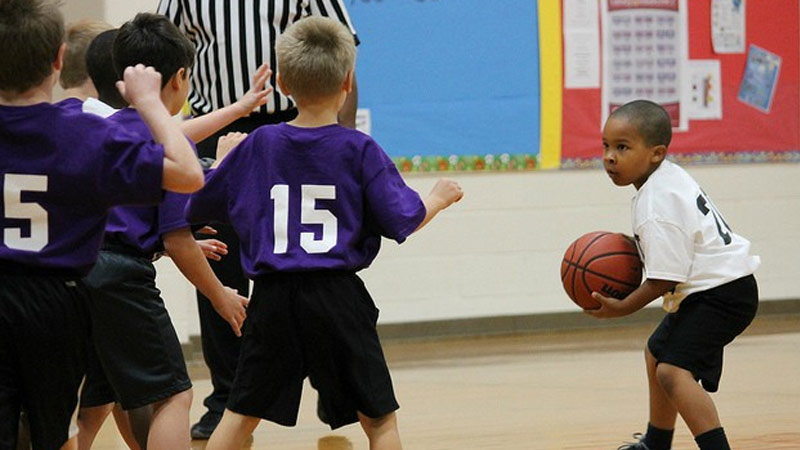
Passing is a critical aspect of basketball, enabling players to share the ball with their teammates. Kids should practice the overhead pass, where the ball is released from above the head using both hands simultaneously.
This pass is effective for longer distances and allows players to pass over defenders. The chest pass is a common method used for shorter distances and quicker passes.
Players use both hands to pass the ball from chest level, aiming to pass accurately to a teammate.
The bounce pass involves bouncing the ball off the ground before it reaches the teammate. It is often used to pass around defenders or reach a teammate who is closer to the ground. Kids should practice bouncing the ball off the floor at the appropriate distance and timing.
Shooting
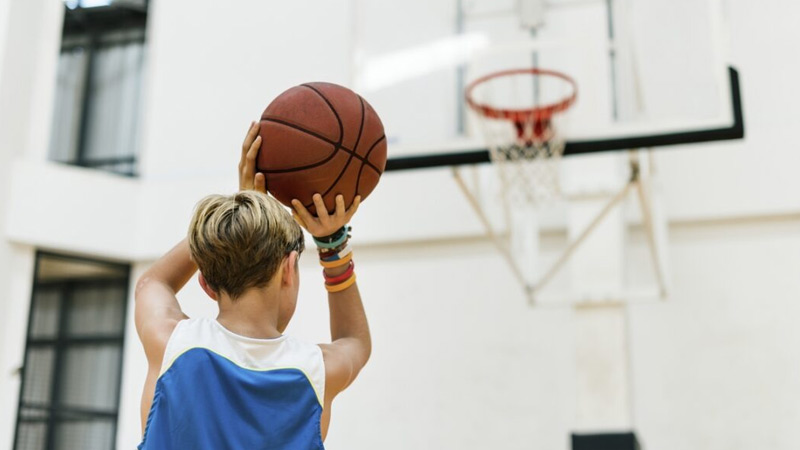
Source: teachhoops.com
Shooting is the ultimate objective in basketball, where players attempt to score points by throwing the ball into the opponent’s basket.
Kids should learn and refine their shooting techniques. This includes proper grip, body positioning, and follow-through. A correct shooting form helps players achieve accuracy and consistency when attempting to score.
When shooting, players must avoid making physical contact with an opponent that disrupts their shot attempt. If a player is fouled during the act of shooting, and the shot does not go in, they are awarded free throws, where they get an opportunity to score points from the free-throw line without any defenders.
Traveling
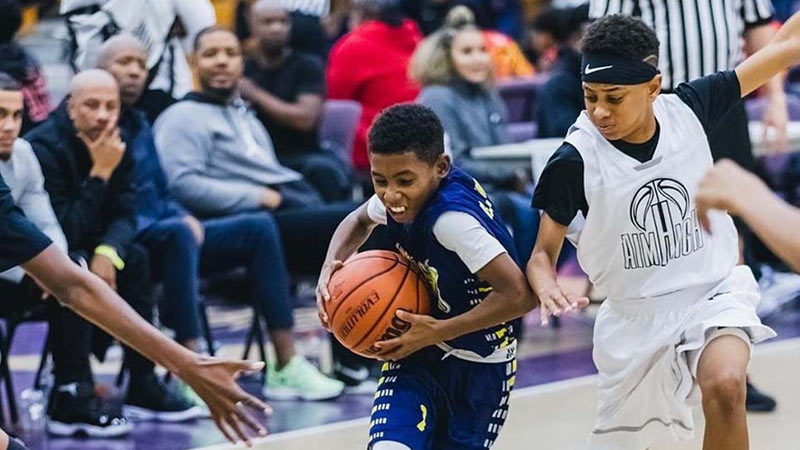
Source: hlhk.org
Traveling is a violation that occurs when a player moves their pivot foot while in possession of the ball. When a player receives the ball, they must establish a pivot foot. The pivot foot is the foot that remains in contact with the ground while the other foot can move to perform pivots or passes.
Players must be mindful of not lifting or sliding their pivot foot without dribbling, as it constitutes traveling.
Double Dribble
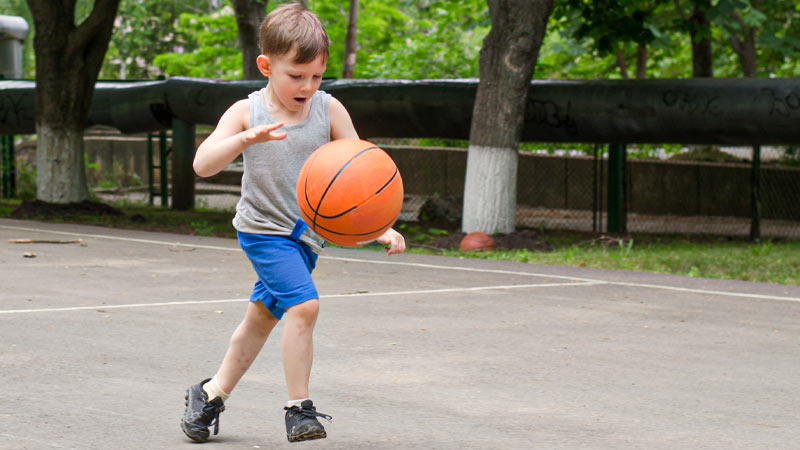
Source: sportsrec.com
Double dribble is a violation that involves dribbling the ball with both hands simultaneously or stopping dribbling and then dribbling again. Here’s a more elaborate description:
Once a player stops dribbling, they must pass, shoot, or give up the ball before dribbling again.
If a player stops their dribble, they cannot resume dribbling unless they have passed or shot the ball. Failing to comply with this rule leads to a turnover, with the opposing team gaining possession.
Three-Second Violation
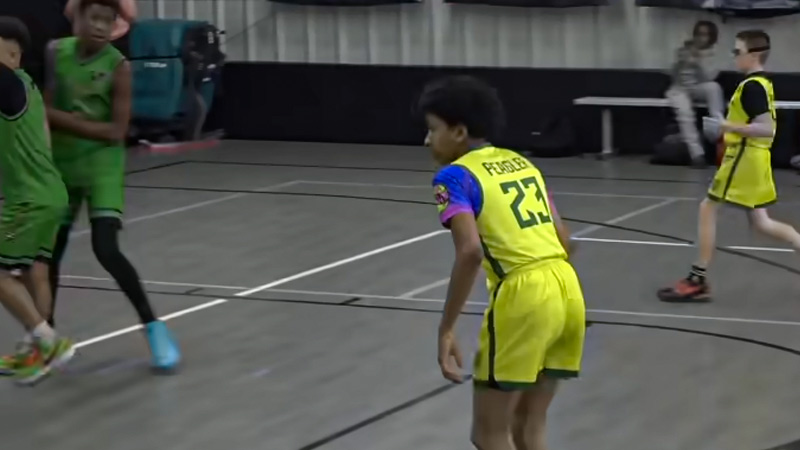
The three-second violation is a rule that prevents offensive players from staying in the key area (also known as the paint or restricted area) for more than three seconds continuously. The key area is the rectangular area underneath the basket.
If an offensive player remains in the key for longer than three seconds, it results in a turnover, and the opposing team is awarded possession of the ball.
Out-of-Bounds
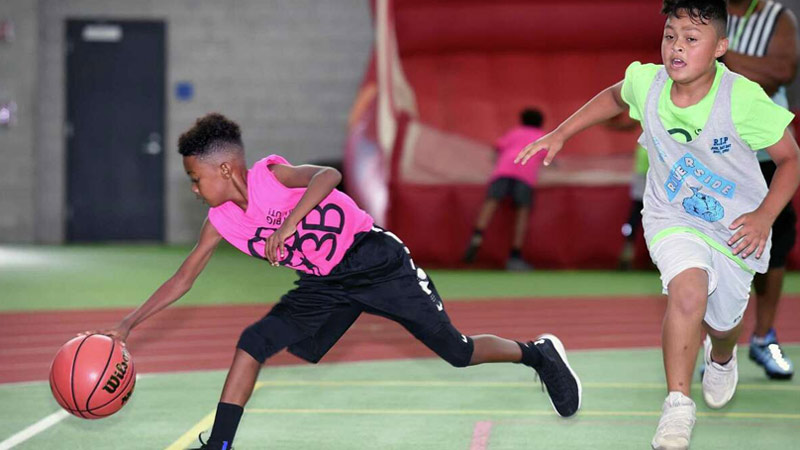
Source: nhregister.com
The out-of-bounds rule determines when the ball is considered out of play. If the ball crosses the boundary lines on the sides or ends of the court, it is considered out-of-bounds.
When the ball goes out-of-bounds, the opposing team is awarded possession of the ball.
Players must establish both feet inbounds while maintaining control of the ball to be considered inbounds when receiving a pass or making a play.
Foul
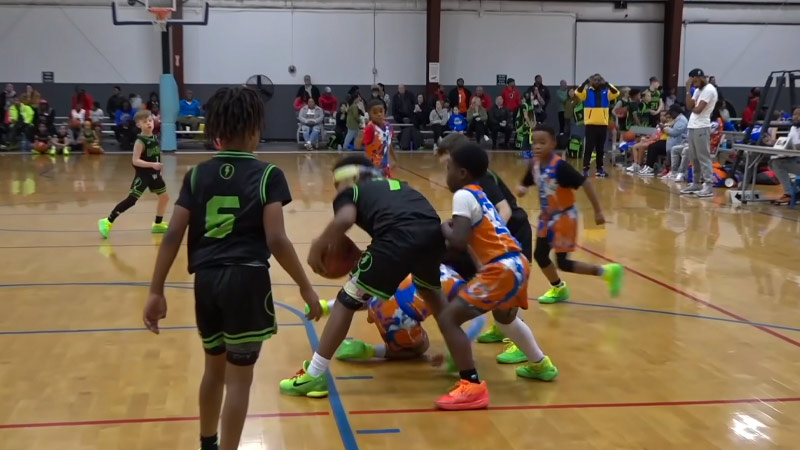
Fouls occur when a player violates the rules of the game and can result in penalties for the offending player or team.
There are different types of fouls, including personal fouls (such as pushing, tripping, or excessive contact), technical fouls (behavioral infractions like unsportsmanlike conduct), and flagrant fouls (severe or dangerous fouls).
When a player commits a foul, the opposing team is awarded either free throws or possession of the ball, depending on the situation and the number of team fouls.
Free Throws
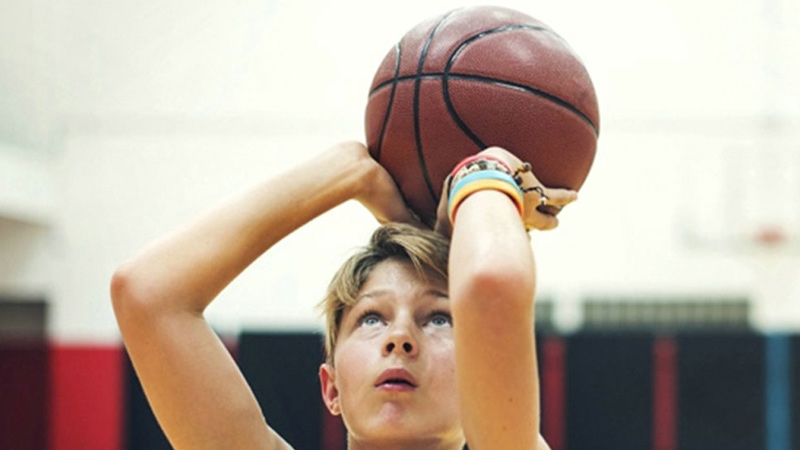
Source: thebballhub.com
Free throws are awarded to a player who has been fouled while shooting or to a team when the opposing team commits excessive fouls. A free throw is an uncontested shot taken from a designated area behind the free-throw line.
The number of free throws awarded depends on the situation, such as whether the player was attempting a two-point or three-point shot when fouled.
The player shoots the free throws without defenders, and each successful shot earns the team one point.
Jump Ball
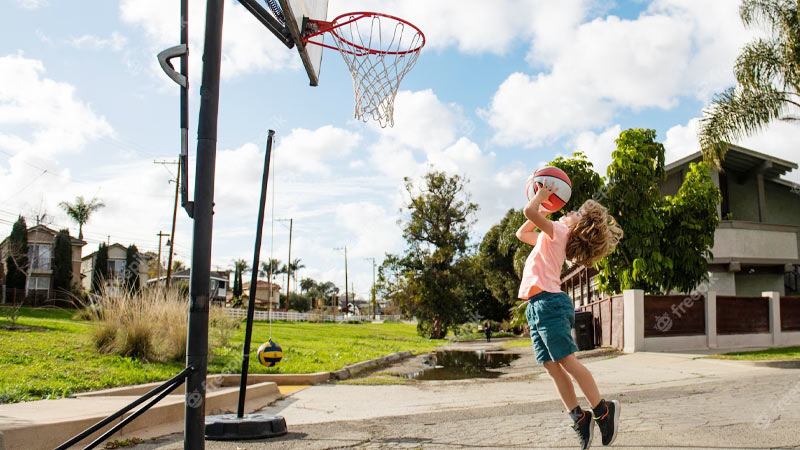
Source: freepik.com
A jump ball is a method used to start the game or resolve certain possession situations.
At the beginning of the game, a jump ball occurs at the center of the court between two opposing players. The referee tosses the ball into the air, and the two players try to gain possession by tapping the ball to their teammates.
In other possession situations where it’s unclear which team should have the ball (e.g., simultaneous possession, alternating possessions), a jump ball can also be used.
It’s important for young players to understand and follow these rules to ensure fair play, safety, and a better understanding of the game of basketball.
Coaches, parents, and officials should provide guidance and explanations to help kids grasp these rules and enjoy the sport to the fullest.
Significance of the Basic Kids Rules in Basketball
The rules of basketball for kids hold significant importance for several reasons:
Fair Play
Rules establish a level playing field for all participants. They ensure that the game is played in a fair and equitable manner, allowing each team to have an equal opportunity to succeed.
Kids learn the value of fairness, respect, and sportsmanship by adhering to and understanding the rules.
Safety
Rules help prioritize the safety of young players. They regulate physical contact, discourage dangerous plays, and promote a safer environment for kids to play basketball.
By following the rules, children minimize the risk of injuries and develop good habits in terms of sportsmanship and self-control.
Skill Development
Rules create structure and order within the game, allowing young players to develop their skills effectively.
By understanding and implementing the rules, kids learn proper positioning, movement, teamwork, and decision-making. These skills translate to improved overall basketball abilities.
Understanding the Game
By learning and following the rules, kids gain a deeper understanding of the game of basketball. They comprehend concepts such as positioning, offensive and defensive strategies, and the flow of the game.
This knowledge enhances their basketball IQ and enables them to appreciate the sport on a more comprehensive level.
Communication and Collaboration
The rules of basketball foster communication and collaboration among teammates. Players must communicate on the court, coordinate their movements, and follow specific rules to execute plays effectively.
Understanding and abiding by the rules enhances teamwork, cooperation, and cohesion within the team.
Discipline and Respect
Learning and adhering to the rules of basketball instill discipline in young players. They learn the importance of respecting the authority of coaches, referees, and officials who enforce the rules.
Discipline and respect are crucial qualities that extend beyond the basketball court and positively impact other areas of a child’s life.
Preparation for Higher Levels
Knowledge of the rules at a young age provides a solid foundation for players who wish to continue their basketball journey at higher levels.
Understanding the fundamentals and rules of the game from an early stage allows players to transition smoothly into more advanced levels of competition.
The significance of kids’ basketball rules lies in promoting fairness, safety, skill development, understanding of the game, teamwork, discipline, and respect. By adhering to these rules, young players can fully enjoy the sport, grow as athletes, and develop valuable life skills.
FAQs
What is the three-second violation in basketball?
The three-second violation occurs when an offensive player remains in the key area (restricted area) for more than three seconds continuously.
The key area is the rectangular region beneath the basket. If a player violates this rule, it results in a turnover, and the opposing team gains possession of the ball.
How does the out-of-bounds rule work in basketball?
The out-of-bounds rule dictates that when the basketball crosses the boundary lines on the sides or ends of the court, it is considered out-of-bounds. The opposing team is then awarded possession of the ball.
Players must establish both feet inbounds while maintaining control of the ball to be considered inbounds when receiving a pass or making a play.
What constitutes a foul in basketball?
A foul occurs when a player violates the rules of the game. Common fouls include pushing, tripping, or making excessive contact with an opponent. Other infractions, such as unsportsmanlike conduct or severe/dangerous fouls, may result in technical or flagrant fouls.
When a player commits a foul, the opposing team may be awarded free throws or possession of the ball, depending on the circumstances and team fouls.
What are free throws in basketball?
Free throws are awarded to a player who has been fouled while shooting or to a team when the opposing team has accumulated a specific number of fouls.
During a free throw, the fouled player gets an uncontested shot from a designated area behind the free-throw line. Each successful free throw earns the team one point.
When is a jump ball used in basketball?
A jump ball is utilized to start the game and resolve certain possession situations. At the beginning of the game, a jump ball occurs between two opposing players at the center of the court.
The referee tosses the ball into the air, and the players attempt to gain possession by tapping the ball to their teammates. Jump balls can also be used in cases of simultaneous possession or alternating possessions.
Bottom Line
The basic rules of basketball are essential for young players to enjoy the sport and develop their skills. The rules create a fair and safe playing environment while promoting teamwork, discipline, and respect.
By familiarizing themselves with concepts such as the three-second violation, out-of-bounds, fouls, free throws, and jump balls, kids can confidently navigate the basketball court and grow as athletes.
So, grab your basketball, gather your friends, and let the game begin! Have a nice day.

